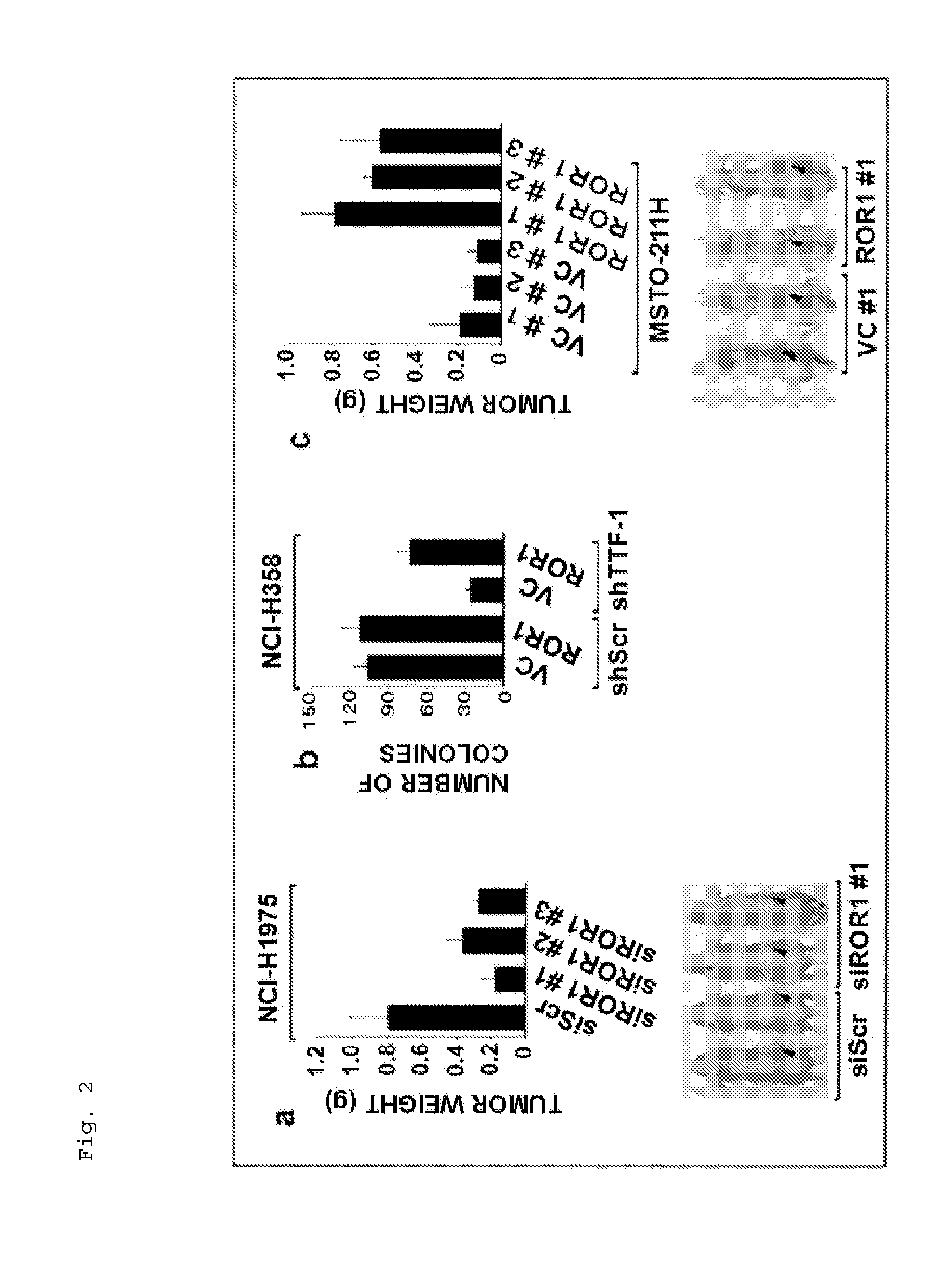Method for suppressing receptor tyrosine kinase-mediated pro-survival signaling in cancer cell
- Summary
- Abstract
- Description
- Claims
- Application Information
AI Technical Summary
Benefits of technology
Problems solved by technology
Method used
Image
Examples
example 1
[0133]
[0134]The luciferase reporter assay utilizing a region near 1.0-kb of the human ROR1 gene promoter showed the activation was dependent on TTF-1 (a in FIG. 1). The chromatin immunoprecipitation assay revealed that TTF-1 directly bound to the ROR1 gene promoter (b in FIG. 1). These results indicated that ROR1 was a transcription target of TTF-1.
example 2
[0135]
[0136]The in vivo treatment by administering ROR1 siRNA with atelocollagen into the tumors significantly reduced the growth of the xenograft tumor from NCI-H1975 (a in FIG. 2).
[0137]Meanwhile, the growth of the TTF-1+ / ROR1+NCI-H358 cells having been suppressed to a substantial degree by the short hairpin TTF-1 (shTTF-1) expression was significantly restored by co-expressing ROR1 (b in FIG. 2). This suggests that ROR1 induced by TTF-1 be a quite important mediator located downstream of survival signaling by TTF-1.
[0138]Further, the in vivo growth of the xenograft tumor from the ROR1-negative MSTO-211H cells was enhanced by exogenously expressing ROR1 at a level equivalent to that of the NCI-H358 cells (c in FIG. 2).
example 3
[0139]
[0140]Next, in order to elucidate the ROR1-mediated signal transduction, potential downstream molecules were analyzed by the western blotting analysis.
[0141]Suppressing ROR1 reduced phosphorylation of c-Src, PTEN, AKT, and FOXO1, but enhanced phosphorylation of p38 (a in FIG. 3). Meanwhile, the xenograft tumor derived from ROR1-introduced MSTO-211H cells demonstrated opposite effects (b in FIG. 3).
[0142]These findings match an “oncogenic shock” model, in which rapid inhibition of oncogenic signal transduction unbalances pro-survival signaling and pro-apoptotic signaling, consequently leading to cell death.
[0143]ROR1-positive lung adenocarcinoma cell lines are dependent on ROR1-mediated survival signaling in this manner. If the signaling is inhibited, apoptotic reactions would be sequentially induced.
PUM
| Property | Measurement | Unit |
|---|---|---|
| Electrical resistance | aaaaa | aaaaa |
Abstract
Description
Claims
Application Information
 Login to View More
Login to View More - R&D
- Intellectual Property
- Life Sciences
- Materials
- Tech Scout
- Unparalleled Data Quality
- Higher Quality Content
- 60% Fewer Hallucinations
Browse by: Latest US Patents, China's latest patents, Technical Efficacy Thesaurus, Application Domain, Technology Topic, Popular Technical Reports.
© 2025 PatSnap. All rights reserved.Legal|Privacy policy|Modern Slavery Act Transparency Statement|Sitemap|About US| Contact US: help@patsnap.com



